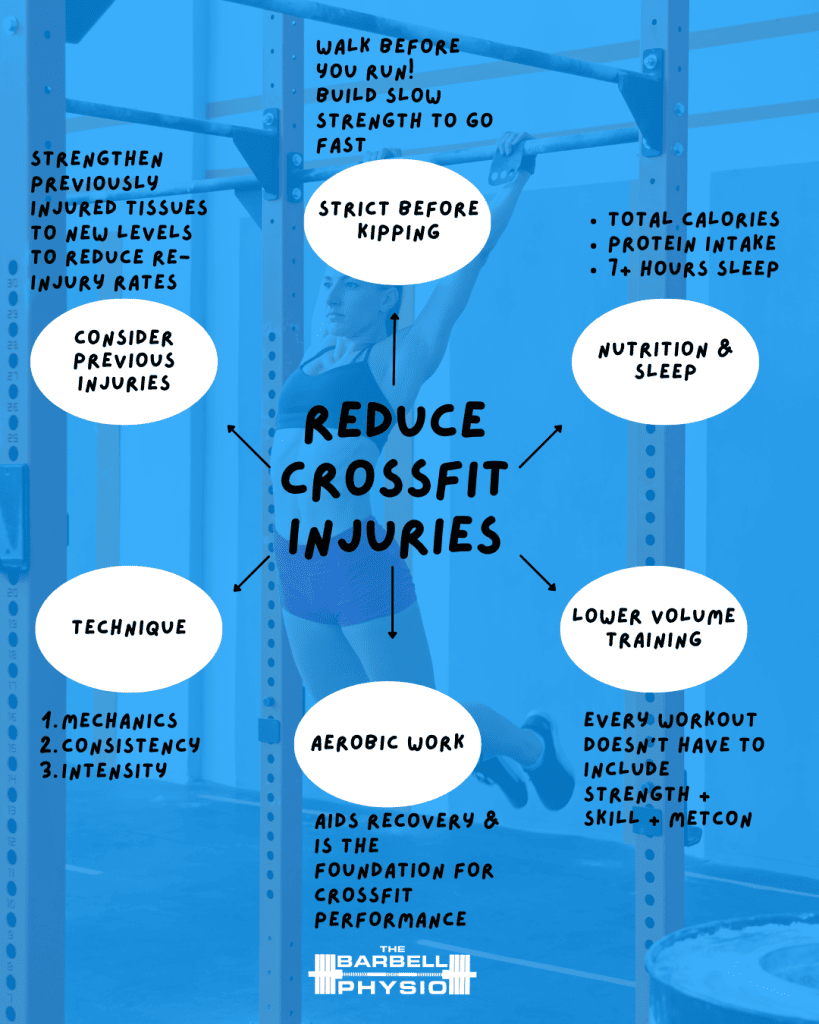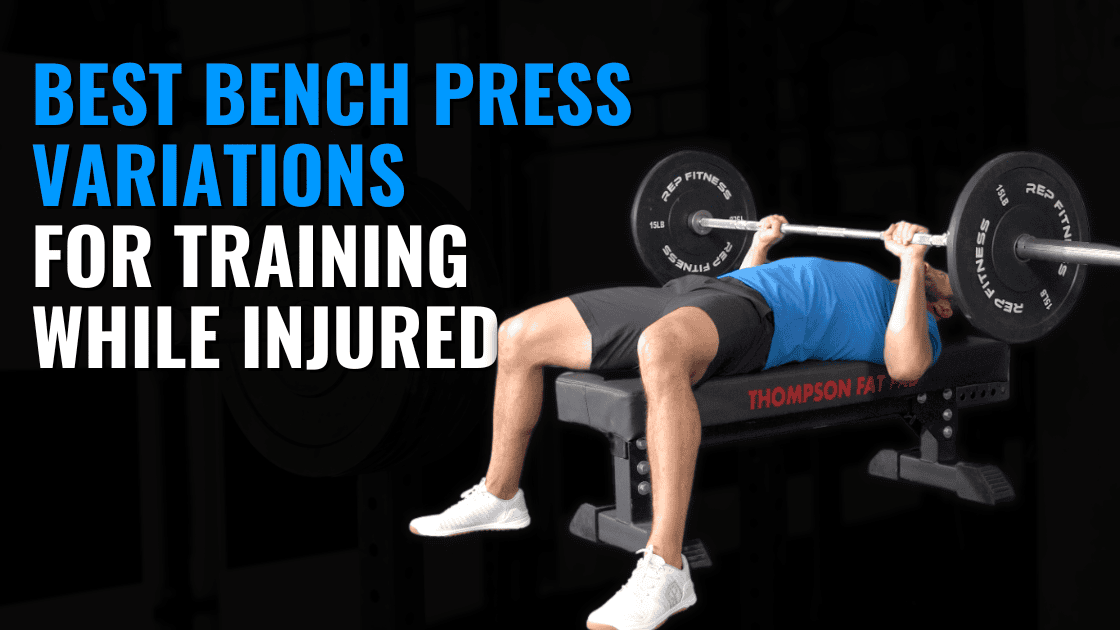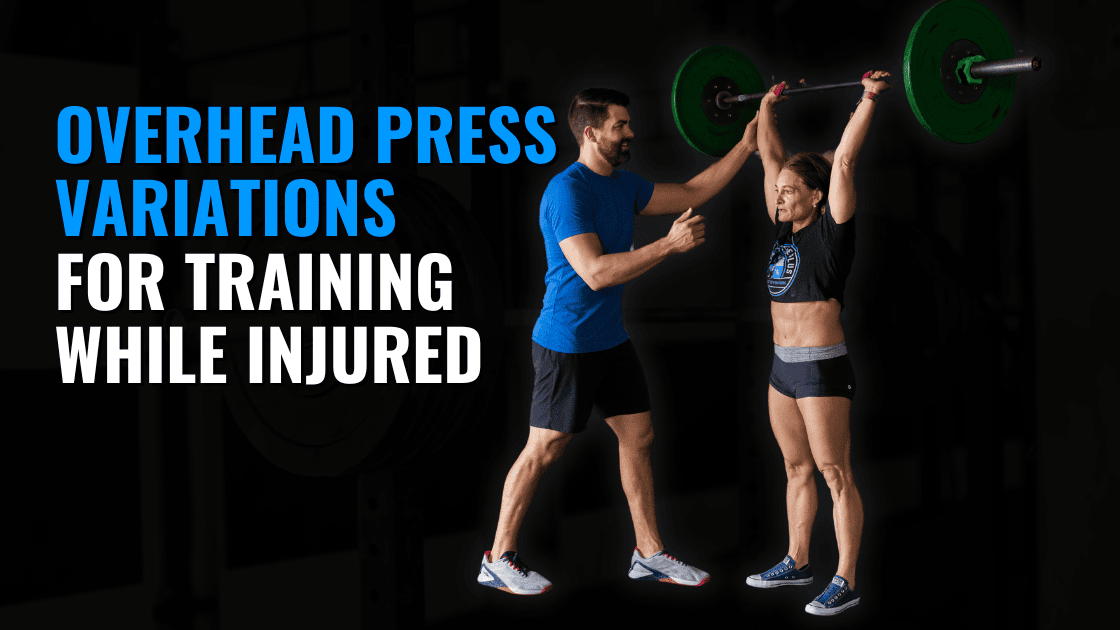Over the last ten years, CrossFit has exploded, becoming one of the most popular forms of exercise ever. The combination of constantly changing workouts and a focus on community attracts many individuals to this training style. The growth of CrossFit has also come with a large backlash, with many in the strength and conditioning world disapproving of the methodology. This article will cover two topics. First, is CrossFit safe to perform, or is the injury risk too high? Second, what can be done to reduce CrossFit injury rates for those wanting to participate in this sale of training?
Is CrossFit Dangerous?
When fitness professionals critique CrossFit, they often cite a few common issues:
- Olympic lifts are performed for high reps and under fatigue.
- Box jumps are performed in long, intense workouts.
- And, of course, the dreaded kipping movements seen in CrossFit
A typical argument is that these training tactics are improper and will surely create serious injuries in CrossFit.
While it is true that these are tactics not seen anywhere else in the fitness world, we have to be careful not to let our biases trump science. Over the last several years, several research studies have looked at CrossFit injury rates. Those studies are listed below, with the numbers representing the calculated number of injuries per 1,000 training hours. In CrossFit, you’ll see a range between 0.27 and 18.9 injuries, with 7 of those 9 studies showing rates under four injuries per 1,000 hours.
That amount of data has led to two systematic reviews (1, 2) concluding that “Current evidence suggests that the injury risk from CrossFit training is comparable to Olympic weightlifting, distance running, track and field, rugby, football, ice hockey, soccer, or gymnastics.”
So while our perception that some of the tactics used in CrossFit are sure to destroy participant’s bodies, the research doesn’t seem to agree that CrossFit is significantly more dangerous than other forms of activity.
But even that misses the bigger point of the huge health implications that happen when humans don’t exercise. Even if you disagree with the methodology or want to ignore the research, it should be celebrated that people exercising are combating the bigger health risks of a sedentary life.
It is important to note that not all CrossFit gyms are created equal. Like in any business or profession, some individuals rise to the top, creating excellent experiences. And others put forth subpar efforts. There are examples of poorly run CrossFit gyms, horrible programming, and coaches that don’t emphasize technique work. But we don’t bash the entire methodology because of a few bad eggs.
Reducing CrossFit Injuries
None of this is to say that injuries don’t happen in CrossFit because they clearly do, just as they occur in all training (or lack of training).
Several things can be done in CrossFit gyms to reduce the risk of injury.
- Low Volume Programming – the trend in recent years has been to stuff more and more training within an hour-long CrossFit class. More volume means more recovery and less time for proper coaching and scaling. I believe that if more gyms focused on less volume, we’d see fewer injuries.
- Technique – CrossFit always preaches learning proper mechanics, demonstrating them consistently, and then adding intensity. All gyms must enforce this with members for injury reduction and long-term performance.
- Consider previous injuries – Larsen, 2020 found that previous injuries increased your likelihood of having a CrossFit injury. Coaches and athletes should review previous injuries and make sure strength, mobility, and technique considerations are made.
- Strict Before Kipping – build slow strength & control before adding in speed for fewer injuries and better long-term progress in performance.
- Nutrition & Sleep – you can only reap the benefits of exercise if you properly recover from it. 8 hours of sleep and adequate calorie and protein intake are crucial for CrossFitters.
- Aerobic work – your aerobic fitness is the foundation of your CrossFit performance. Every day doesn’t have to be an all-out 10min WOD. Get 1-2 days per week of slower, steady work to aid in recovery and build your base. See our podcast on Zone 2 work for more details!
Conclusion
CrossFit isn’t dangerous. Being physically inactive is.
If CrossFit isn’t your jam, no problem. But let’s move past the myth that CrossFit causes unnecessary injuries and instead encourage people to continue exercising!








